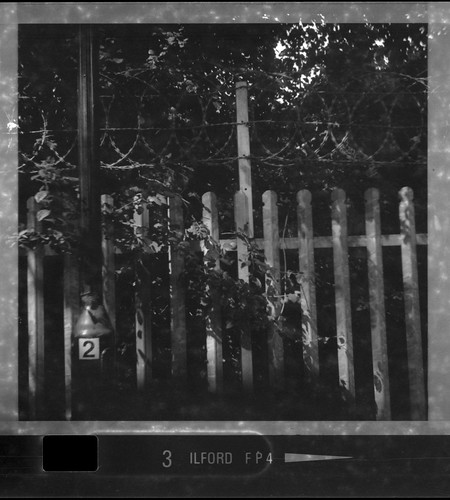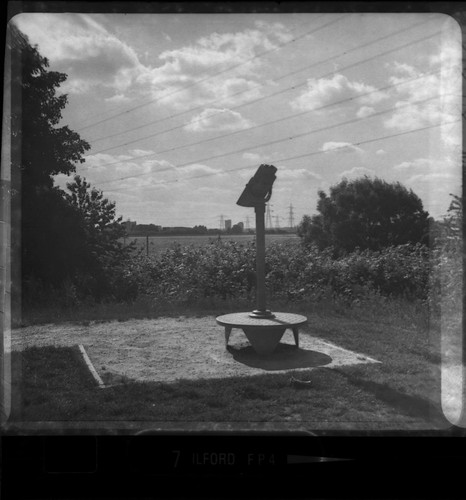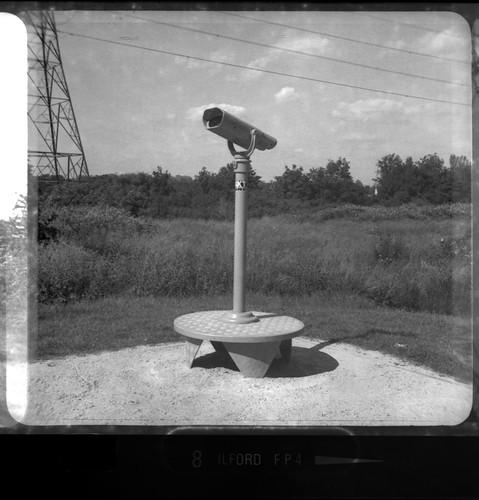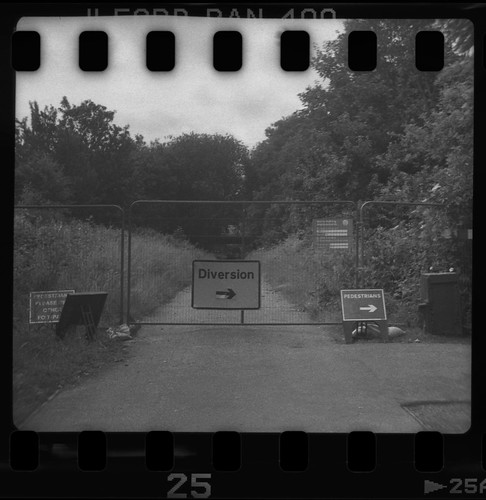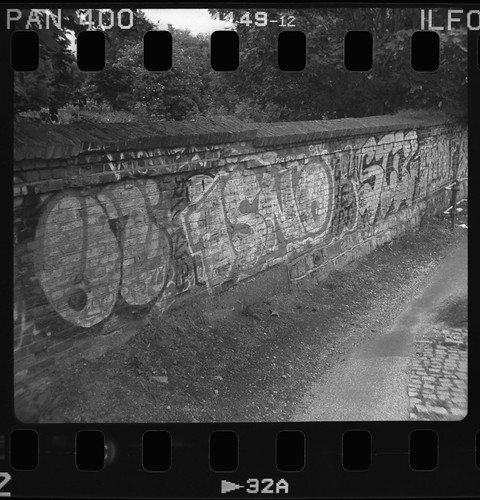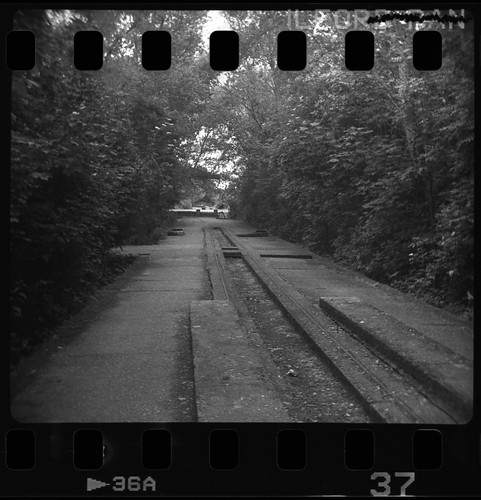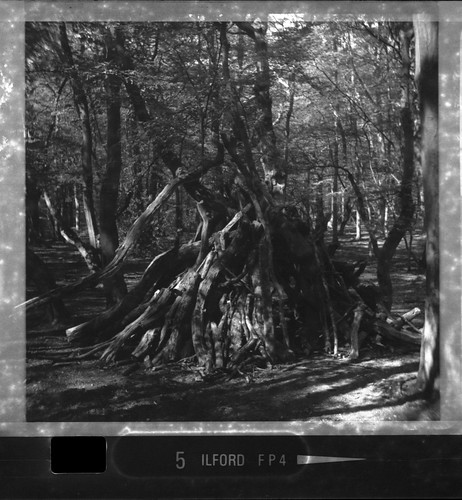 |
| Kodak Instamatic 277X with Ilford FP4 |
 |
| Ilford FP4 126 cartridge |
Developing the film, I used the standard time and temperature for modern FP4 Plus, 15 minutes in Ars-Imago #9 diluted 1+50 at 20ºC with normal agitation. I had intended to re-use the plastic cartridge (in part due to the late 1960s/early 70s 'sunburst' Ilford symbol on the label), but even after repeated scoring with a knife, this proved too difficult to take apart cleanly, and it broke in the changing bag while attempting to do this. The spool and attached 126 backing paper were salvaged in the process however: when re-used with 35mm the backing paper can end up getting somewhat ragged after a few rolls. As an aside, on the leaflet which came in the box with the film, there are instructions for home processing, with a pair of illustrations on how to break open the cartridge (figures 1-3 on the first side of the leaflet show loading, advancing the film, and unloading).

Scanning the negatives, it was clear that the emulsion had reacted to the backing paper–this showed up nicely in the rebate at the lower edge of the film where the shape of the long hole with its rounded ends is imprinted into the film (this doesn't match up with the single perforation for each frame as it's where the emulsion has been in contact with the back of the backing paper while rolled together). This reaction has caused a certain amount of mottling across the film, but, with enough exposure, in some frames it's hardly visible and only really shows in larger areas of smooth tones, such as the sky. The pre-exposed 126 frames also vary: on denser negatives, these begin to disappear; on thinner negatives, or with larger areas of shadow, these frames are much clearer. I chose not to crop the scans of the film, instead showing the whole width of the film, pre-exposed frames, perforations, rebate and frame numbers, and the overlapping edges of each exposure: the frame below shows all of these, the mottling and the backing paper hole too.
Last year, I'd shot a cartridge of 126 Verichrome Pan, and had used a yellow filter for the entire roll; many of the shots this year would have benefitted from the same, as the conditions were sunny and a number of frames had areas of sky with some light fair weather clouds; potentially a yellow filter might also have lightened the tones in some of the foliage, something I didn't consider until part of the way into the film, having left home without thinking I might need a filter. The other error I made was in not ensuring that the flap of the plastic every-ready case was always entirely clear of the lens, having it intrude into the bottom part of the image in a couple of frames.
Comparing these frames with those on Verichrome Pan from last year also brought up something which seems like a oddity in the manufacture of these 126 films: the pre-exposed frame lines do not appear to be a single exposure all around the nearly-square image, but an operation performed in (at least) two steps. The exposures for the horizontal and vertical frame lines clearly overlap; the horizontal lines at the top and bottom edges of the frames look continuous for the whole length of the film, while the vertical frame lines extend from the top edge of the film but do not entirely meet the lower edge of the bottom horizontal frame line, stopping a little short. I did reflect that possibly the exposure of the vertical frame lines could have been linked to a stepping motion at the same time as the exposure of the frame numbers, with an ascending counter linked to the position of the perforation hole. This is relatively easy to discern in the image below, one of the frames that has a lot of shadow areas around the edges. Last year's cartridge of Verichrome Pan shows the same overlapping pre-exposed horizontal and vertical lines.
Overall, the FP4 came out reasonably well considering its age, some frames did need more exposure, and some carelessness on my part notwithstanding with the camera case, as well as overlooking using a filter. Thirty-odd years ago, had I dropped the cartridge into Boots for processing (as I did when first photographing with a handed-down Instamatic) I'd no doubt have received my twelve square prints with a sprinkling of advice stickers on them.
